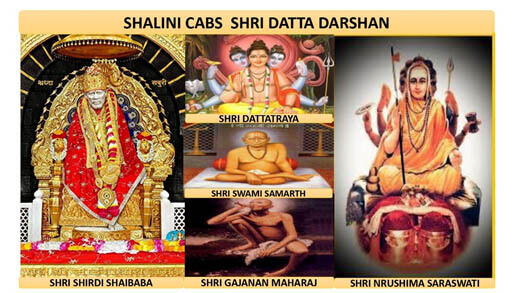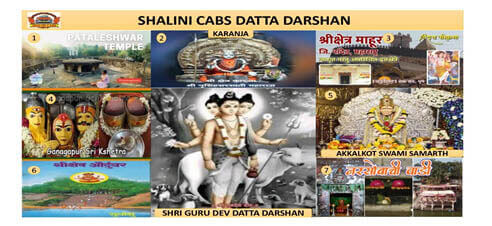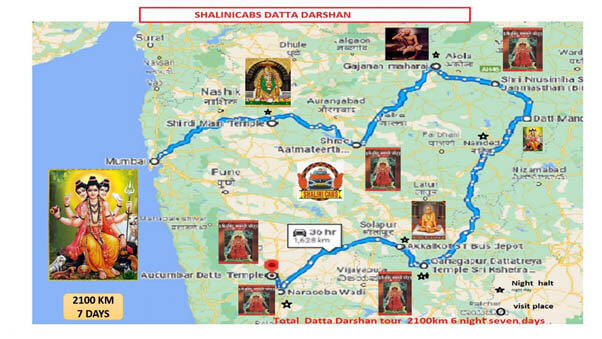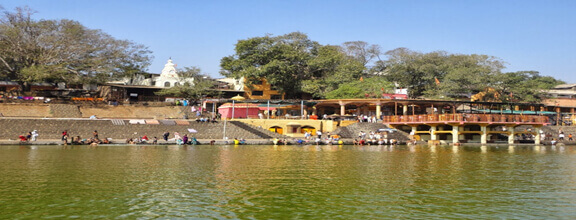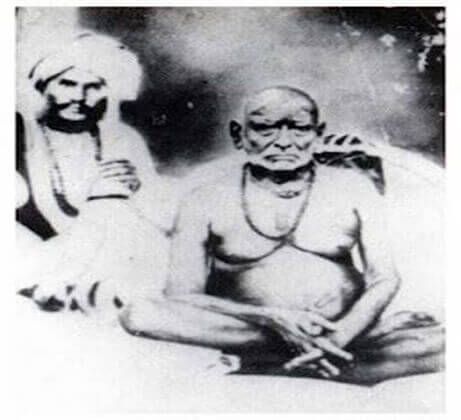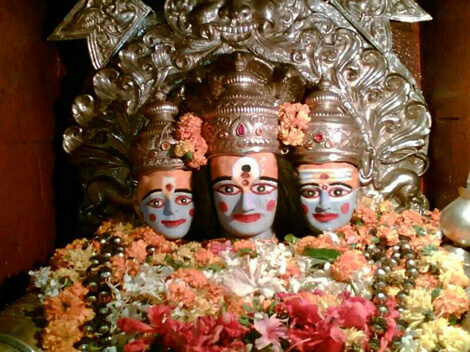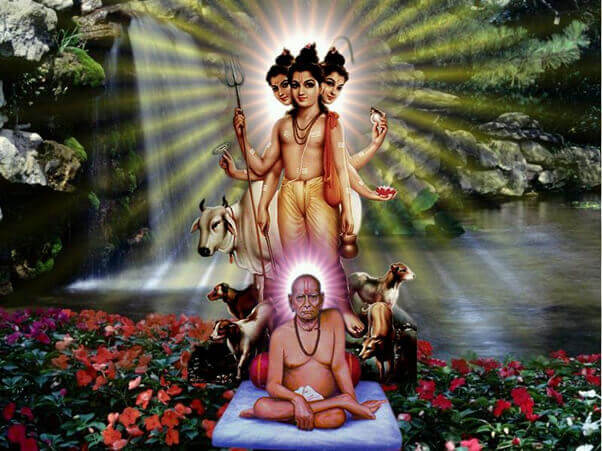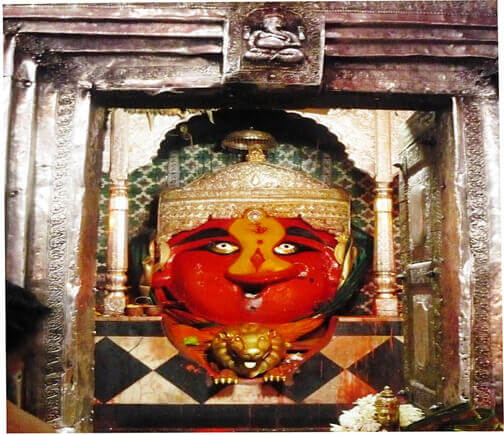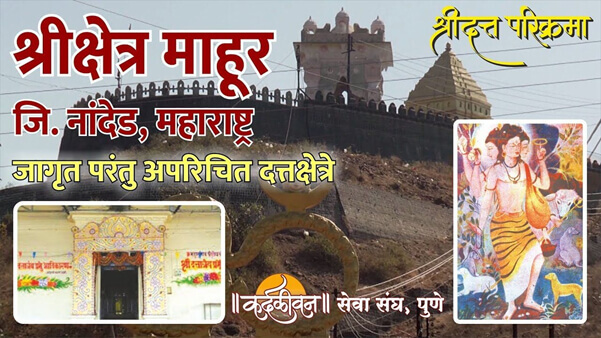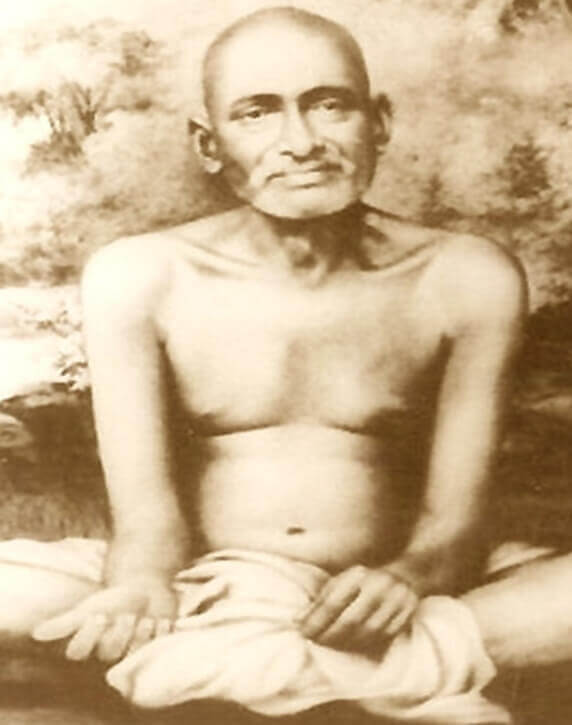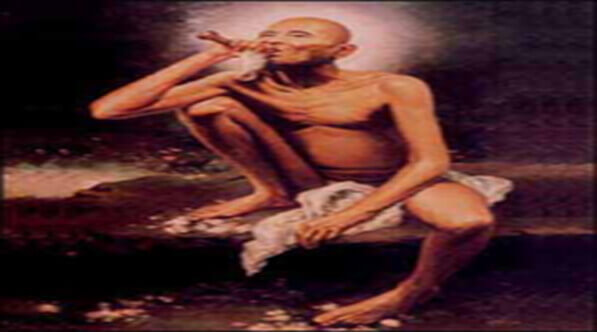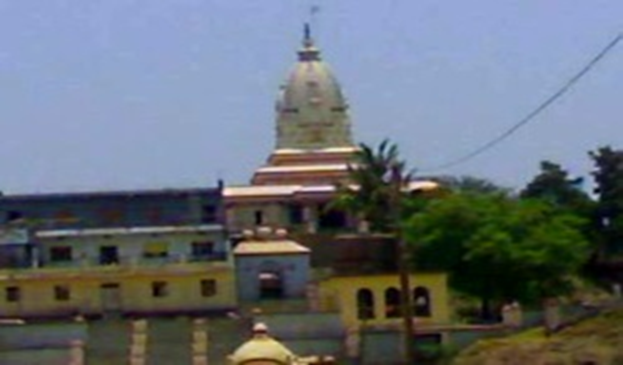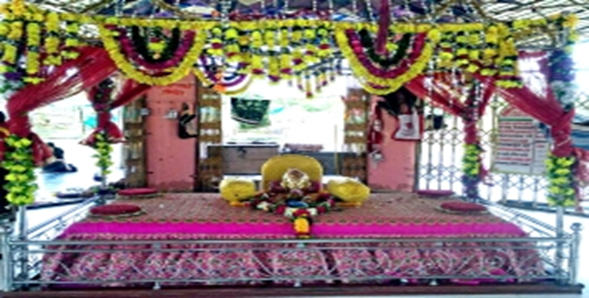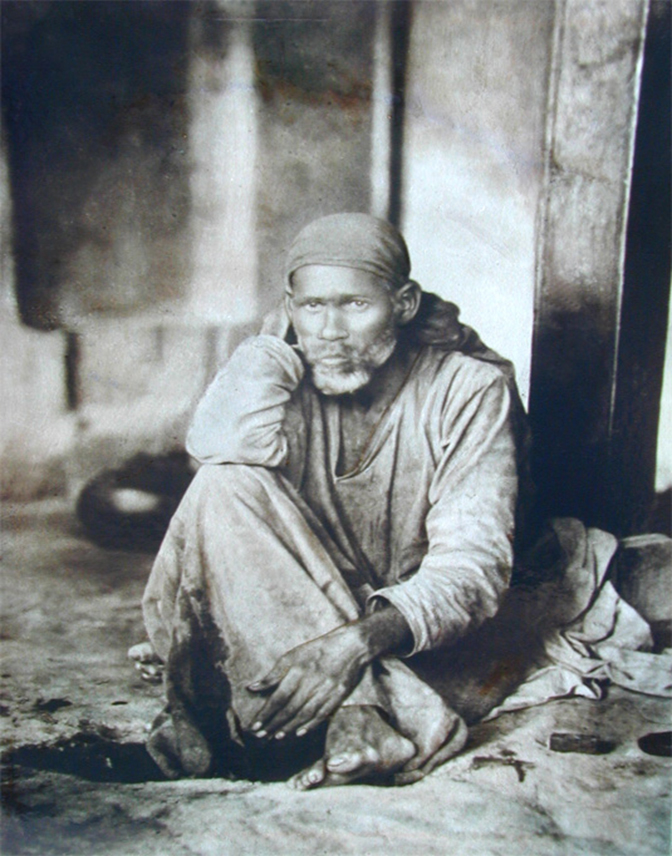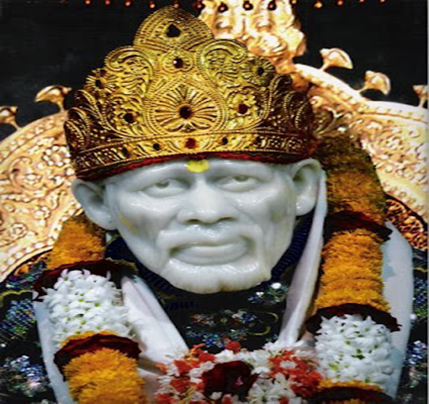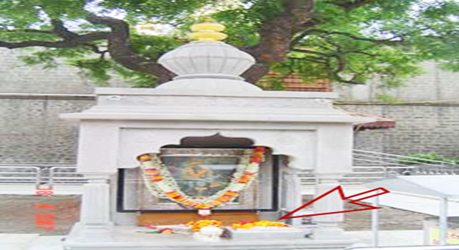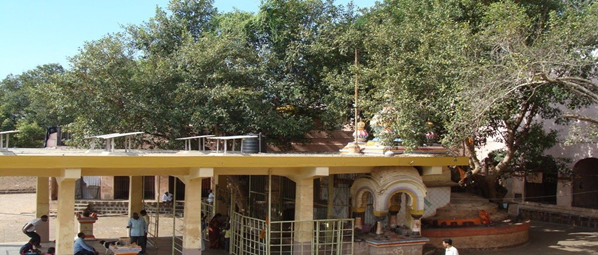
Audumbar is known for the shrine of Dattatraya held in high reverence. It is said to have been built in honour of Nar-sirhha Sarasvati who was a great saint and who is supposed to be the incarnation of Dattatraya. His greatness has been extolled in Guru Charitra written by Sarasvati Gangadhar. Narsimha was born of a poor Brahman couple, Madhava and Amba, in about 1304.
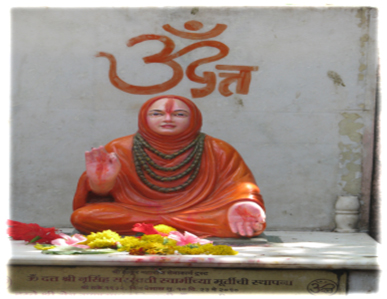
After his thread ceremony he left on a holy pilgrimage and on its completion came to Audumbar on the banks of the Krushna to engross himself secretly in religious mortification during the Caturmasa. At this time it so happened that a Brahman’s son who was dull−witted, overcome with shame at the remarks passed by the people in this regard, went to Bhuvanesvari temple on the opposite bank of the Krushna and prayed for three days and nights without taking any food. But the goddess remained unmoved by his severe penance upon which he cut off his tongue and laid it at Her feet. Taking pity the goddess advised him to go to Audumbar and pray Narsirhha. The boy taking the command went to Narsirhha and falling at his feet received the blessings of the sage. The identity of the saint having been known, thousands of people began to flock to the place for darshan.
At the end of Chaturmasa, when the sage prepared to leave, the people requested him to stay. He only left his padukas under audumbar tree over which a small shrine was erected by a devotee from Poona who also built a dharmashala.
The outer mandap is of very recent construction. The shrine is situated at a lovely spot on the banks of the Krushna and in turn commands a splendid view of the river. There is some striking scenery around. It is associated with the visits of Eknath Maharaj and Janardan Swami, the noted saints of Maharastra and that of Brahmanand Svami who came from the Girnar Mountain, built a math in 1826 and finally took his samadhi.
A splendid ghat has. Been constructed on the river by the temple−side. It was built by the disciples of Sahajanand Maharaj, a follower of Brahmanand Swami at the orders of their guru. So potent are supposed to be the divine powers of the deity that if persons possessed by spirits are kept in the premises for a few days they are completely cured. On the opposite bank is the shrine of Bhuvanesvari. The idol is of black flint-stone and is exquisitely sculptured. This place is overgrown with audumbar trees and hence the name.
Audumber with similar respect as that of other places of Lord Dattatreya like Ganagapur and Narsoba Wadi.
Overview Of The Temple
The Place Where Swamy Left His Padukas For His Devotees.
This is a glory of place where people are blessed by knowledge and are freed from their troubles. This place is 0vergrown with audumbar trees .
As per vision from Lord Dattatreya to Sage Bramhanand of Girnar, he discovered and renowned this divine holy place Audumber where Datta Avatar Nrusinha Saraswati performed Chaturmas Anushtan (Four holy months).
The identity of Nrusimha Saraswathi having been known, thousands of people began to flock to the place for darsan. At the end of Chaturmasa, when the sage prepared to leave, the people requested him to stay.
The outer mandap is of very recent construction. The shrine is situated at a lovely spot on the banks of the Krishna. Devotees can have darshan of Nijaroopa darshan of swamy padukas in the mandir in morning hours. Rudrabhisheka will be performed to padukas at about 7 to 8 a.m. and the padukas will be covered with alankara after abhisheka.
Original Padukas Of Oudumbar Kshetra
Padukas covered with silver kavacha
Paduka Darshan With Alankara In Main Temple
ACCOMODATION:

The Building bhakta nivas near the Temple provides accommodation to piligrims and Pujaris of the temple are also providing accommodation at their residence.
A View Of Bhakta Nivas
As the Audumbar place is very small village, many devotees are staying at Sangli city which is one hour journey to Oudumbar kshetra. AC and Non AC deluxe lodges and many hotels are also available at Sangli to have best stay.
A splendid ghat has been constructed on the river by the temple-side so that they can take a dip in the holy waters of the river Krishna..
Krishna Ghat Near To Temple
For the convenience of the piligrims to visit the other bank of the river
A small boat is also available which is called AVADHOOTA NAUKA.
Maa Bhuvaneswari devi Temple is situated on the other bank of Krishna river where a poor Brahmin boy was blessed. The story goes as follows in adhyaya 17 of Shree Gurucharitra.. . Narasimha was born in a poor Brahman couple, Madhava and Amba, in about 1304. Even After his thread ceremony he could not reciete any of his lessons and so faced a lot of insult from his elders and teachers.
So he left his home and came to Audumbar on the bank of the Krishna and prayed Maa Bhuvaneswari for three days and nights without taking any food.
But the goddess remained unmoved by his severe penance upon which he cut off his tongue and laid it at her feet. Taking pity the goddess advised him to go to Audumbar and pray Narsimha Saraswathy swamy. The boy taking the command and went to Sri guru and falling at his feet. He received the blessings of the Swamy and became a scholar. Blessings from Sree guru at Oudumbar kshetra

